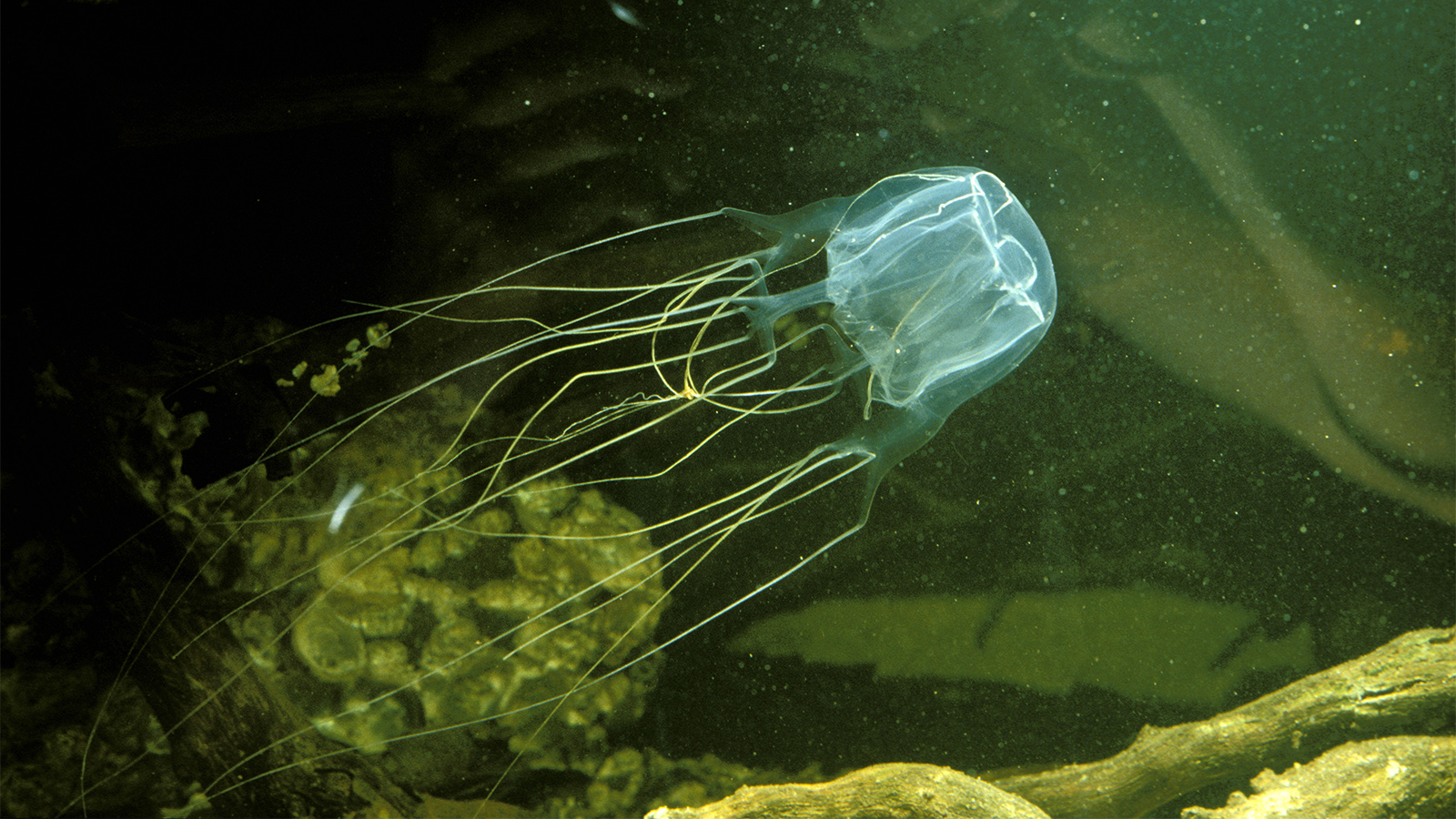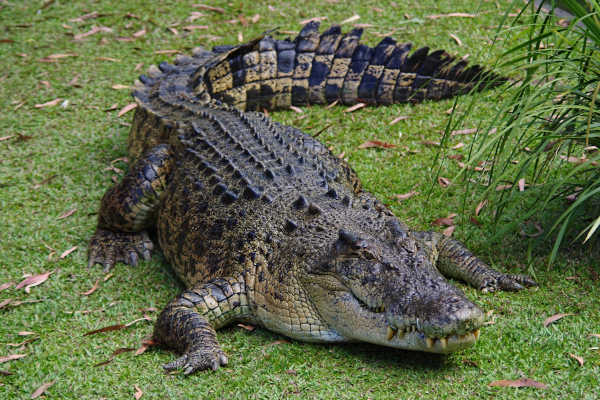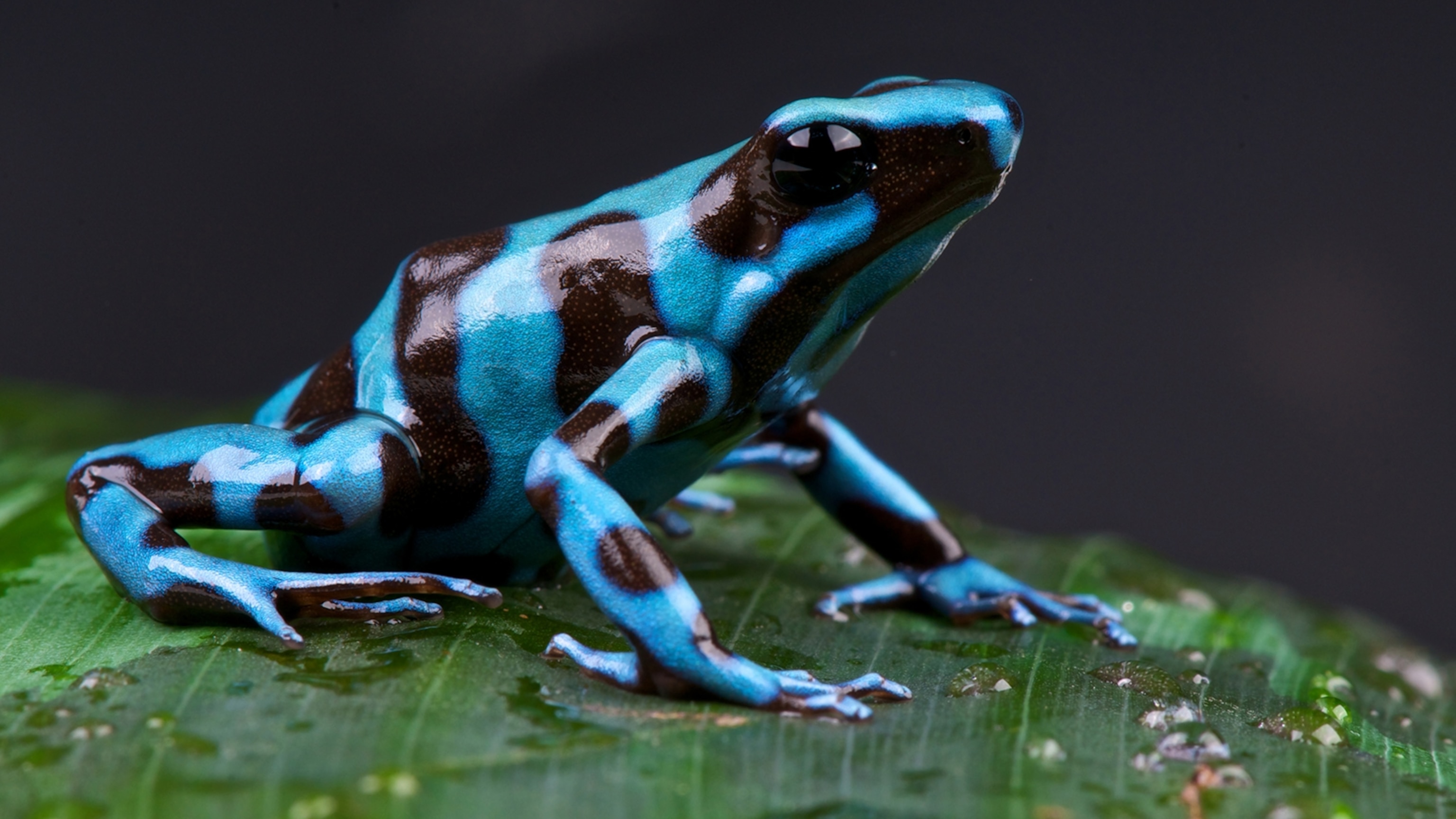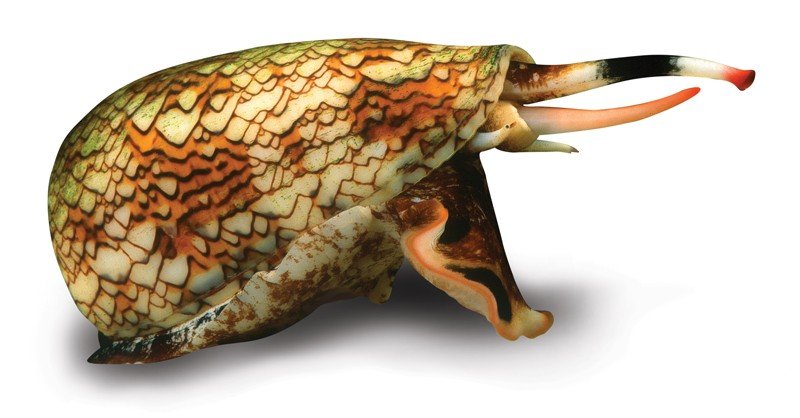The Top 10 Most Dangerous Animals in the World
Introduction:
The world is home to a diverse range of animals, many of which can be dangerous to humans. While some animals are more lethal than others, it's important to understand and respect the risks associated with certain species. In this blog, we'll be exploring the top 10 most dangerous animals in the world.
Mosquitoes:
Mosquitoes are small flying insects that are part of the family Culicidae.
There are over 3,500 species of mosquitoes worldwide, with around 40 species
found in the United Kingdom. The most common species found in the UK are the
Culex pippins and Aides vexans.
Mosquitoes have long, thin bodies with six legs and two
wings. They range in size from 2 to 18 millimeters, with females being larger
than males. Mosquitoes are known for their painful and itchy bites, which are
caused by the females when they pierce the skin to suck blood. The males do not
feed on blood, instead, they feed on nectar and other plant fluids.
Mosquitoes are often associated with diseases such as
malaria, dengue fever, and the Zika virus, which are spread when infected
mosquitoes bite humans. In the UK, mosquitoes do not typically carry diseases,
but they can still be a nuisance to humans and animals alike.
Mosquitoes breed in standing water, and it only takes a
small amount of water for them to lay their eggs. Common breeding sites include
stagnant pools, ponds, and even water-filled containers such as bird baths or
old tires. To prevent mosquitoes from breeding, it is important to remove any
standing water around your home.
In conclusion, while mosquitoes may be a nuisance and
potentially dangerous in some parts of the world, in the UK they are generally
just a pest. However, it is still important to take measures to prevent their
breeding and protect yourself from their bites.
Box Jellyfish:
Box jellyfish,
also known as sea wasps, are a species of jellyfish found primarily in the
waters of the Pacific and Indian Oceans, including around Australia. They are
named after their cubed-shaped bell, which is a distinguishing feature of the
species. Box jellyfish are considered one of the most venomous creatures in the
world.
Box jellyfish have transparent bodies and long,
tentacle-like appendages that hang from their bell. These tentacles can grow up
to 3 meters in length and are covered in thousands of tiny, stinging cells
called nematocysts. When a box jellyfish comes into contact with human skin,
these cells release a potent toxin that can cause intense pain and in some
cases, even death.
Box jellyfish are highly efficient hunters, using their
tentacles to catch small fish and shrimp. They are also able to detect the
movements of their prey using specialized eyes that are located at the base of
their tentacles.
Despite their dangerous reputation, encounters with box
jellyfish are relatively rare. However, when they do occur, they can be
extremely dangerous. Symptoms of a box jellyfish sting include intense pain,
nausea, vomiting, and difficulty breathing. In severe cases, the venom can
cause cardiac arrest and death within minutes.
To avoid being stung by a box jellyfish, it is important
to stay away from areas where they are known to inhabit. If you do come into
contact with a box jellyfish, it is essential to seek medical attention
immediately. Treatment typically involves administering antivenin and providing
supportive care to manage symptoms.
In conclusion, box jellyfish are a highly venomous
species of jellyfish that pose a serious threat to humans. While encounters
with these creatures are relatively rare, it is important to take precautions
when swimming in areas where they are known to inhabit.
Saltwater Crocodile:
The saltwater
crocodile, also known as the estuarine crocodile, is the largest living reptile
in the world. Found primarily in the waters of Southeast Asia, northern
Australia, and the surrounding islands, these massive predators can grow up to
6 meters in length and weigh over 1,000 kg.
Saltwater crocodiles have a distinctive appearance, with
rough, scaly skin that is brown or gray in color. They have powerful jaws
filled with sharp teeth, which they use to catch and crush their prey. These
crocodiles are apex predators, meaning they sit at the top of the food chain
and have few natural predators.
Saltwater crocodiles are known for their aggressive
behavior and are responsible for a number of attacks on humans each year. They
are opportunistic hunters and will eat just about anything they can catch,
including fish, birds, mammals, and other reptiles. Despite their large size,
saltwater crocodiles are also excellent swimmers and are known to travel great
distances in search of food.
Conservation efforts have helped to increase the
populations of saltwater crocodiles in recent years, but they remain a
threatened species due to habitat loss and hunting. In many parts of their
range, saltwater crocodiles are protected by law to ensure their survival.
Despite their fearsome reputation, saltwater crocodiles
are an important part of the ecosystem in which they live. They help to control
populations of other animals and play an important role in maintaining the
balance of their ecosystem.
African Elephant:
The African
elephant is the largest land animal in the world, found primarily in
sub-Saharan Africa. These magnificent creatures are known for their distinctive
trunks, large ears, and massive size. They can grow up to 4 meters in height
and weigh over 5,000 kg.
African elephants are herbivores, feeding primarily on
leaves, bark, fruits, and roots. They are also capable of consuming up to 150 liters
of water per day, using their trunks to drink and spray water over their
bodies to cool off.
African elephants are social creatures, living in herds
that can range from a few individuals to as many as 100. These herds are
typically led by a matriarch, an older female who is responsible for making
decisions and keeping the herd together. Male elephants, known as bulls, may
form smaller groups or live alone.
African elephants are considered a keystone species,
meaning they play a critical role in maintaining the balance of their
ecosystem. They help to shape the landscape by breaking down trees and clearing
paths, which in turn provide habitat for other animals. They also play a key
role in seed dispersal, helping to ensure the survival of a variety of plant
species.
Unfortunately, African elephants are also threatened by
poaching and habitat loss. They are hunted for their ivory tusks, which are
highly valued in many parts of the world. In addition, human encroachment on
their habitat has led to conflicts between elephants and humans, often
resulting in the deaths of both.
Conservation efforts are underway to protect African
elephants and their habitat. These efforts include anti-poaching measures,
habitat preservation, and public education campaigns to raise awareness about
the importance of these magnificent animals.
Cape buffalo:
The Cape Buffalo, also known as the African buffalo, is a large, powerful bovine found primarily in sub-Saharan Africa. They are one of the most iconic and formidable animals on the continent, known for their size, strength, and unpredictable behavior.
Cape Buffalos have a distinctive appearance, with large,
curved horns that can span over 1 meter and a thick, muscular build. They can
weigh up to 900 kg and stand over 1.5 meters tall at the shoulder.
These animals are herbivores, feeding primarily on
grasses and other vegetation. They are social creatures, living in herds that
can range from a few individuals to several hundred. Cape Buffalos have a
strict social hierarchy, with dominant males known as bulls leading the herd.
Despite their peaceful grazing habits, Cape Buffalos are
known for their unpredictable and aggressive behavior. They are capable of
charging and attacking humans and other animals, often without provocation.
This has earned them a reputation as one of the most dangerous animals in
Africa.
Cape Buffalos are also important to their ecosystem,
playing a critical role in shaping the landscape and providing food for
predators such as lions and hyenas. However, they are threatened by habitat
loss and hunting, and their populations have declined in many areas.
Conservation efforts are underway to protect Cape
Buffalos and their habitat. These efforts include anti-poaching measures,
habitat preservation, and public education campaigns to raise awareness about
the importance of these animals to their ecosystem.
Pufferfish:
The pufferfish is a unique and fascinating fish found in tropical and subtropical waters around the world. They are known for their distinctive ability to inflate themselves into a spiky ball when threatened, making them unappetizing to predators.
Pufferfish come in a variety of shapes and sizes, but
they all have the ability to inflate their bodies by filling their stomachs
with water or air. They also have sharp spines covering their bodies that
protect them from predators even when they are not inflated.
Despite their unusual defensive tactics, pufferfish are
still preyed upon by some predators, including sharks and dolphins. They also
have a unique defense mechanism that involves producing a toxin called
tetrodotoxin, which is highly poisonous to predators and can be lethal to
humans.
Despite their toxicity, some species of pufferfish are
considered a delicacy in certain cultures, and special precautions must be
taken during their preparation to ensure the toxin is properly removed.
Pufferfish are primarily found in coral reefs and other
shallow, warm-water environments. They are omnivores, feeding on a variety of
small crustaceans, mollusks, and algae. Some species of pufferfish also have
the ability to use their strong beaks to crack open the shells of clams and
other hard-shelled prey.
While pufferfish are not considered endangered, they are
threatened by habitat loss and overfishing. As with many species in the world's
oceans, conservation efforts are needed to ensure the long-term survival of
these unique and fascinating fish.
Poison Dart Frog:
The Poison Dart Frog is a small, brightly colored amphibian found in Central and South America. They are known for their vibrant colors, which serve as a warning to potential predators that they are highly toxic.
There are over 170 species of Poison Dart Frogs, each with
its own unique coloration and pattern. They range in size from just a few millimeters
to several centimeters in length.
These frogs are called "dart frogs" because the
indigenous peoples of the Amazon used their toxic secretions to create poison
darts for hunting. The toxin is found in the skin of the frogs and can be
lethal to predators, including humans if ingested.
Poison Dart Frogs are diurnal, meaning they are active
during the day, and they are also arboreal, meaning they live in trees. They
feed primarily on small insects, which they capture with their long, sticky
tongues.
Despite their toxicity, Poison Dart Frogs are not
aggressive towards humans and will only release their toxins if they feel
threatened. Captive-bred Poison Dart Frogs that have not been exposed to the
toxins in their diet are not poisonous.
Unfortunately, habitat loss and the illegal pet trade have
put many species of Poison Dart Frogs at risk of extinction. Conservation
efforts are underway to protect these unique and fascinating creatures,
including captive breeding programs and habitat restoration.
Cone Snail:
The Cone Snail is a predatory sea snail found in tropical waters around the world. They are known for their beautifully patterned shells and the potent neurotoxins they produce, which they use to stun and kill their prey.
There are over 800 species of Cone Snails, ranging in size
from just a few centimeters to over 30 centimeters in length. They have a
distinctive cone-shaped shell, with a narrow aperture and a sharp, pointed
spire.
Cone Snails are carnivorous, feeding primarily on fish
and other snails. They use a proboscis, a long tube-like structure, to inject
venom into their prey. This venom contains a cocktail of toxins that paralyze
the prey, making it easier for the snail to consume.
Unfortunately, the toxins produced by Cone Snails are
also highly toxic to humans and can be lethal in some cases. In fact, they are
considered to be among the most venomous creatures in the world.
Despite their deadly reputation, Cone Snails are also
fascinating creatures. The toxins they produce have been the subject of
extensive research, with scientists investigating their potential for use in
medicine, including the treatment of chronic pain and some types of cancer.
However, Cone Snails are also threatened by habitat loss
and overfishing, and their populations are declining in many areas.
Conservation efforts are needed to protect these unique and important creatures
and their ecosystems.
Hippopotamus:
The hippopotamus often referred to simply as the "hippo," is a large, semi-aquatic mammal native to sub-Saharan Africa. They are known for their massive size, powerful jaws, and aggressive behavior, making them one of the most dangerous animals in Africa.
Hippos can weigh up to 4,500 kilograms and stand up to
1.5 meters tall at the shoulder. Despite their size, they are excellent
swimmers and can hold their breath for several minutes underwater.
Hippos are herbivores and primarily feed on grasses,
although they have been known to consume other plants as well. They spend most
of their time in or near water, where they can keep cool and protect their skin
from the sun.
While hippos may seem docile, they are actually quite
aggressive and territorial animals. They have been known to attack boats and
humans who get too close, and their powerful jaws and teeth can easily crush
bones.
Despite their intimidating reputation, hippos are also
social animals that live in groups of up to 30 individuals. They communicate
with a variety of vocalizations and body language, including grunts, snorts,
and aggressive displays.
Unfortunately, hippos are also threatened by habitat loss
and poaching for their meat and ivory teeth. Conservation efforts are needed to
protect these magnificent creatures and ensure their long-term survival.
Komodo dragon:
The Komodo Dragon
is the world's largest lizard, found only on a handful of islands in Indonesia.
They are known for their impressive size, powerful jaws, and venomous bite.
weigh over 150 kilograms, making them formidable predators. They have sharp
claws and powerful jaws, capable of crushing bones and tearing flesh. In
addition to their strength, they also possess venom glands that produce toxic
saliva that can cause paralysis and even death in their prey.
Despite their fearsome reputation, Komodo Dragons are
also fascinating creatures. They are intelligent and social, with complex behaviors
and communication methods. They are also important to their ecosystem as apex
predators, helping to control populations of smaller animals on their islands.
Unfortunately, Komodo Dragons are also threatened by
habitat loss and hunting. Their populations have declined in recent years, and
they are now considered a vulnerable species. Conservation efforts are needed
to protect these unique and important creatures and their ecosystems.
In addition to their ecological importance, Komodo
Dragons are also of great cultural significance to the people of Indonesia.
They are considered national treasures and are protected by law. Visitors can
observe them in their natural habitat at Komodo National Park, which was
established to protect the dragons and their habitat.
Conclusion:
While the animals listed above are considered to be some
of the most dangerous in the world, it's important to remember that most
creatures are not inherently aggressive or deadly. By understanding and
respecting the risks associated with certain animals, we can better coexist
with the natural world around us.

/https://tf-cmsv2-smithsonianmag-media.s3.amazonaws.com/filer_public/c8/df/c8df8270-8333-4c1e-b138-ecee431f8694/26042_lores.jpeg)








Post a Comment